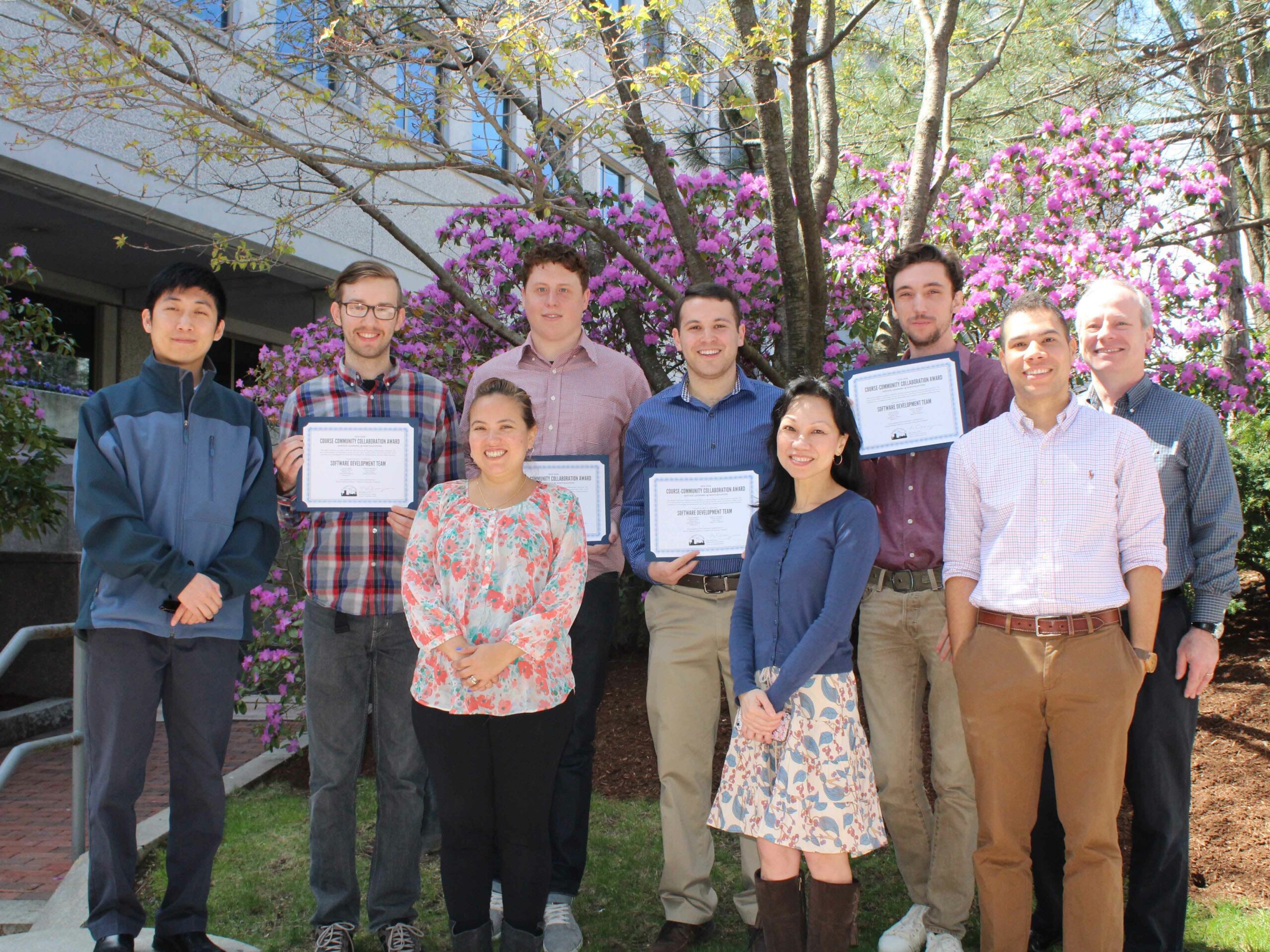Khoury News
Student software development team wins award for community service
Experiential learning at CCIS doesn’t end when co-op is over – it continues in the classroom. In Professor Mike Weintraub’s Software Development class this spring semester, students weren’t tasked with creating projects for made-up clients. Instead, they were split into teams, assigned a community partner and a project, and given a semester to bring that to life.

By Shandana Mufti
Experiential learning at CCIS doesn’t end when co-op is over – it continues in the classroom. In Professor Mike Weintraub’s Software Development class this spring semester, students weren’t tasked with creating projects for made-up clients. Instead, they were split into teams, assigned a community partner and a project, and given a semester to bring that to life.
“Students need something that they can sink their teeth into,” Weintraub, says. “These [clients] are people who can't do this kind of work. They're not technically equipped and often can't afford to do this. There was a real sense of someone depending on them and someone wanting assistance.”
And students loved it. Weintraub collaborated with the Service-Learning Program at Northeastern University’s Center of Community Service to connect with community and campus partners in need of technical help. The class’ groups each worked with one of six clients, including the Boston Housing Authority (BHA), Wediko Services, the Literacy Volunteers of Massachusetts, the City of Boston Mayor’s Office of Civic Engagement, and two different projects for the Service-Learning Program.
The nine-person team assigned to the BHA wowed their clients with the work they produced, earning themselves the Course-Community Collaboration Award presented yearly by the Service-Learning Program. The team created a website to help the BHA manage its volunteer interpreters program, which recruits volunteers to translate for people seeking the BHA’s assistance in finding housing. The students digitized the BHA’s massive database and organizational structure that had previously been managed on paper, streamlining it by creating a website where volunteers can sign up, log in, be assigned tasks and receive notifications about their tasks.
“The specificity to which the community partner talked about the impact that the work that these students were making and how that would really have pretty giant ripple effects in their organization is what really set them apart,” says Becca Berkey, director of the Service-Learning Program. Berkey served as co-chair of the service-learning advisory board that reviewed nominations for the Community Collaboration Award. “The scope of what the students have been able to accomplish this semester has made a significant contribution to the organization. ”
It was an arduous process for the class – described by Weintraub as a “mini startup” – requiring the teams to define their own work culture, interactions with their clients, and the quality and delivery of their work. As the semester progressed, Weintraub gave more and more class time for project work, but much of the work, including regular meetings with the clients, took place outside the classroom. The team worked in two-week cycles called sprints, meeting with the BHA every other Tuesday to go over what had been completed since the previous meeting and to review what was next on the to do list. As a team, they split into two groups – frontend and backend – meeting as a whole every other Sunday.
Their first real task, according to Brian Cox (BS computer science/business administration ’17) was establishing the framework for the project and figuring out how to restructure the BHA database. “One of the first things that we recognized about the BHA was that the way that they were storing their data, because of a lot of manual entries…was almost unfollowable,” he says. After understanding the data, they had to set up a development environment that all nine team members could access to ensure everyone was using the same technology and operating system. “Once that was all set up, we started picking up steam and we could actually code,” he says.
There were rewarding moments too, like when the team demoed the website for the BHA for the first time. “It was really cool to just have that experience of, ‘Wow, this thing that we're building for this class, not only are we learning a ton through it but we're actually going to save them a ton of time and make them that much more efficient at their jobs and make the whole team a lot stronger,’” says Jack Burns (BSCS ’17).
The product that they delivered to the BHA will make the job of managing translators much easier. It centralizes the database and streamlines the correspondence process, allowing volunteers to be notified by text and by email. And while it’s missing what Brian describes as “some of the things that were more nice to have” like calendar integration and PDF uploading, the team met the core needs of the project. Some team members, including Jack and Brian, have also chosen to make themselves available as tech support to the BHA over the summer. The other students on the team were Timothy Wright, Joseph Maxwell, Zachary Gawlik, Tevin Otieno, Stefan Cepko, Xiangyu Li and Anu Singh.
In the nomination letter submitted to the Service-Learning Program, Sheyla Carew of the BHA wrote: “The most important aspect of their work is that is noticeable that they really care about the project and they are passionate about it. They understood why is important to be able to manage more effectively our volunteers in order to serve better our clients who speak limited English…I recommend the students from the Software Development class because they surpassed our expectations and have gone above and beyond to satisfy us as a client.”